How Do I Know If My Dog Has Fleas?
Recognizing the signs of a flea infestation on your dog is crucial for their health and comfort. Fleas can be challenging to spot directly, especially on dogs with thicker or darker fur, but there are telltale signs and methods you can use to detect their presence. From inspecting your dog’s skin for flea dirt and irritation to using a flea comb or setting up a light trap, each approach provides valuable clues about whether fleas are lurking on your pet. Additionally, observing signs like patchy hair loss, tapeworms, or even flea bites on humans can indicate a flea problem in your home. This guide outlines effective ways to check your dog for fleas so you can address any issues promptly and keep your pet happy and comfortable.
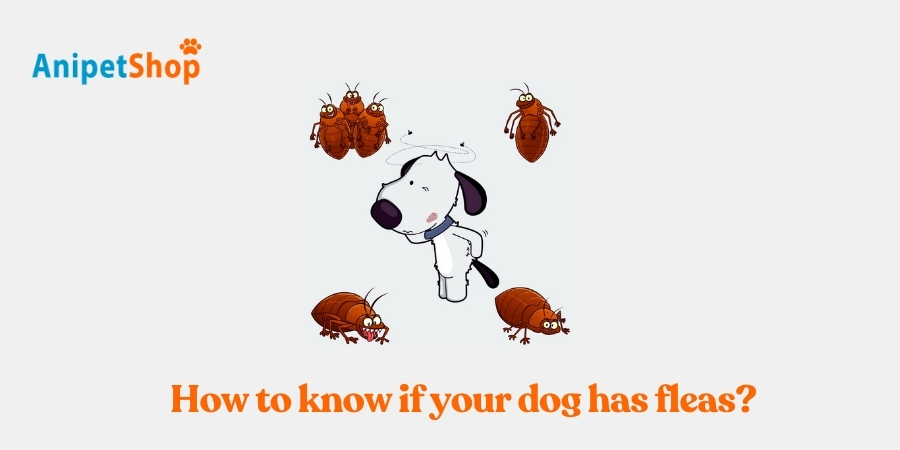
How Do I Know If My Dog Has Fleas?
Fleas can be hard to see, but there are clear signs that indicate their presence. By regularly checking for symptoms like skin irritation, flea dirt, or unusual scratching, you can quickly determine if fleas are a problem and take action to keep your dog comfortable and healthy.
Inspect Your Dog’s Skin
Regularly inspecting your dog’s skin is essential for early flea detection and prevention. To perform an effective check, find a well-lit area and gently part your dog’s fur to expose the skin. Fleas are small, dark brown or black insects, often smaller than ants, making them difficult to spot. Key areas to examine include flea-prone spots such as the base of the tail, belly, behind the ears, armpits, and groin—areas that are warm, protected, and attractive to fleas.
During a skin inspection, watch for these signs of fleas:
- Red, Bumpy Skin: Flea bites can lead to irritated, red, or bumpy skin, often a result of your dog scratching the itchy bites.
- Tiny Adult Fleas: Fleas are quick and agile, darting or even jumping away when exposed. These adult fleas can be seen moving across the skin when the fur is parted.
- Flea Larvae or Cocoons: In some cases, you may spot flea larvae or cocoons in the early stages of development, which are generally pale and small, often hidden in fur.
Regular skin inspections are critical for keeping flea issues under control. By catching signs of fleas early, you can act promptly with effective and safe treatments to protect your dog. Routine checks, especially after outdoor activities, help prevent fleas from becoming a more severe infestation, ensuring your dog stays comfortable and healthy.
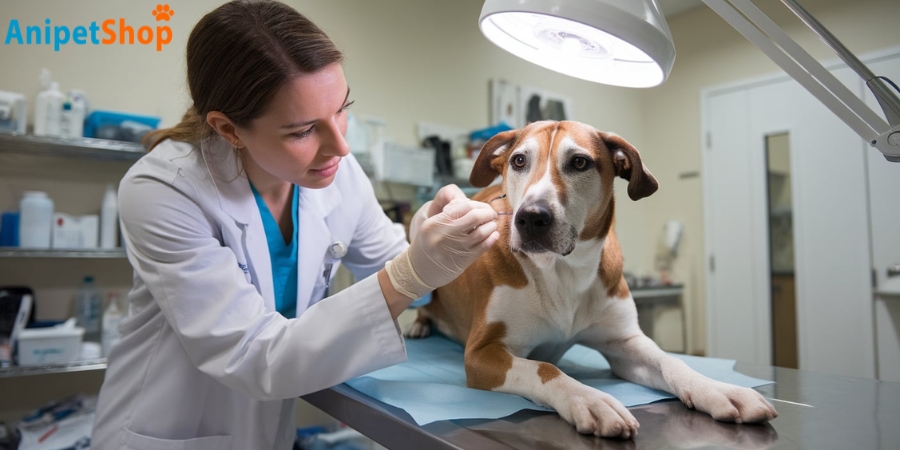
Look for Flea Dirt
One of the clearest signs that your dog may have fleas is the presence of flea dirt, which is essentially flea feces. Flea dirt appears as tiny, dark specks that resemble ground pepper and can be found on your dog’s fur, especially in areas like the base of the tail, belly, and around the neck—common flea hideouts.
To check if these black specks are flea dirt rather than regular dirt, you can perform a simple test:
- Collect the Specks: Use a fine comb or your fingers to gather any black specks that come off your dog onto a white paper towel.
- Add Water: Sprinkle a few drops of water onto the paper towel. If the specks dissolve and turn dark reddish-brown, it’s an indicator of flea dirt. This color change occurs because flea dirt is digested blood from your dog, confirming flea activity.
Spotting flea dirt early is a key step in identifying a flea problem before it becomes severe. If you see flea dirt, it’s likely your dog has adult fleas actively feeding. Regularly checking for flea dirt, particularly after outdoor play or walks, helps you detect fleas early and act quickly with appropriate treatments to relieve your dog and protect their health.
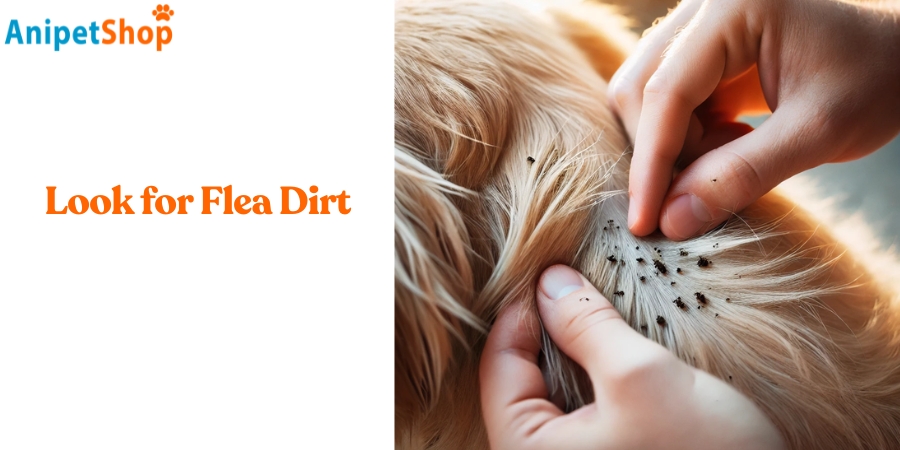
Look for Patchy Hair Loss
Patchy hair loss is a potential sign of fleas, especially when accompanied by frequent scratching or biting at the skin. In cases of moderate to severe flea infestation, dogs often scratch excessively, leading to bald spots or areas with noticeably thin fur. This hair loss typically occurs around common flea-prone areas, such as the base of the tail, belly, and hind legs.
While hair loss can be a strong indicator of fleas, it’s essential to remember that it may also result from other skin conditions, such as allergies, bacterial or fungal infections, or even hormonal imbalances. These issues can cause similar symptoms, so a veterinary consultation is recommended if you notice hair loss, even if you suspect fleas as the cause. Your vet can help identify the root cause and recommend an appropriate treatment plan, whether it involves flea control or addressing another underlying condition.
Regularly checking your dog’s fur and skin, especially if you see hair loss, helps in catching fleas or other skin issues early. By identifying the problem promptly, you can prevent further discomfort and ensure your dog remains healthy and comfortable.

Use a Flea Comb
Using a flea comb effectively detects fleas on your dog by allowing you to meticulously search their coat for signs of these pests. This tool, with its tightly spaced teeth, traps and removes fleas, flea dirt, and eggs from your dog’s fur.
Ensure your dog is calm and comfortable before you begin. Gently comb through the fur, focusing on the neck, base of the tail, and under the legs, where fleas often gather.
To maximize results and promptly identify any fleas, keep a bowl of soapy water nearby. After each pass through your dog’s fur, dip the comb into the soapy water. This practice kills any fleas caught in the comb, preventing their return to your dog’s coat.
Using a flea comb is a highly effective method for eliminating fleas on dogs and should be part of your broader flea prevention strategy.
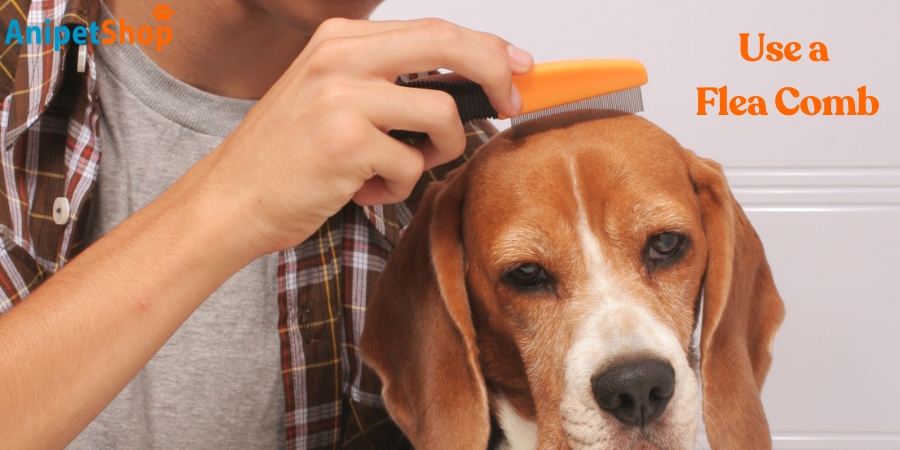
Try a Light Trap
Detecting fleas on your dog can be efficiently done with a light trap. This simple device exploits fleas’ attraction to light. A typical light trap involves a low-wattage bulb placed near a sticky pad or a dish of soapy water. In a dark room, fleas are drawn to the light and get trapped.
Here’s how to set up a light trap to check for fleas:
- Gather Supplies: You’ll need a low-wattage bulb (a small nightlight or desk lamp works well) and either a sticky pad or a shallow dish filled with soapy water.
- Position the Trap: Place the light trap on the floor near areas where your dog frequently rests, such as bedding or favorite spots in the living room. Fleas are often active in these areas, so positioning the trap nearby increases the chance of detection.
- Dim the Room: Turn off other lights in the room, creating a dim environment. The darker the space, the more likely fleas are to be drawn to the light source.
- Monitor the Trap: Check the trap regularly, especially in the morning, to see if any fleas have been captured. Fleas will jump toward the light and either get stuck on the adhesive pad or fall into the soapy water, where they cannot escape.
If you find fleas in the trap, it’s a clear indication that fleas are present in your home and possibly on your dog. This light trap technique is an excellent first step in detecting fleas and can be used alongside regular checks of your dog’s skin and fur. By identifying fleas early, you can implement flea control measures more effectively, keeping your dog comfortable and preventing further spread.
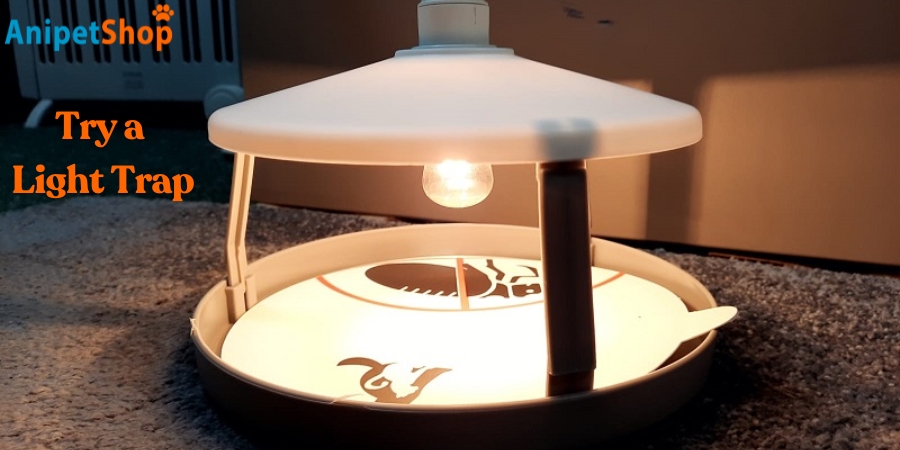
You Are Being Bitten
While fleas prefer pets, they will bite humans if given the chance, especially if they can’t find an animal host. Fleas don’t live on human skin as they do on dogs or cats, but they can still cause discomfort. When they jump onto a person, fleas often bite around the legs and ankles, though they may target any exposed skin.
Flea bites on humans typically appear as small, red, itchy bumps, often clustered in groups. Unlike mosquito bites, flea bites usually don’t have a raised center, but they can be intensely itchy and may cause a rash if scratched excessively. Some people are more sensitive to flea saliva and may experience a mild allergic reaction, resulting in swelling or prolonged itching.
Watch for Tapeworms or Flea Eggs
Checking your dog for tapeworms or flea eggs is vital for detecting a flea infestation. Tapeworms appear as small, rice-like segments around your dog’s anus or in their feces. These parasites spread when a dog eats an infected flea, making tapeworms a potential sign of a flea problem.
Flea eggs are tiny, white, and oval-shaped, often found in your dog’s bedding or fur. Due to their small size and color, they can be hard to see without a magnifying glass and good lighting. Flea eggs are usually clustered, which makes spotting them a bit easier.
If you find tapeworms or flea eggs, consult your veterinarian for treatment to ensure your dog’s health and comfort.
How Do I Get Rid of Fleas on a Dog?
Keeping your dog free of fleas is essential for their comfort, health, and for maintaining a clean, pest-free home. Fleas can cause intense itching, skin irritation, and even spread diseases if left untreated. Wondering how to get rid of dog fleas? Effective flea control requires a combination of regular grooming, preventative medications, and natural remedies. Here’s a straightforward guide with practical steps to help you eliminate fleas on your dog and prevent future infestations.
- Bathe your dog in lukewarm water with mild soap or gentle dish soap to help wash away fleas. Consult your vet before using flea shampoo, as it may dry out your dog’s skin. Avoid bathing within 24 hours before or after applying a topical flea treatment to maintain its effectiveness.
- Comb with a Fine-Tooth Flea Comb: Use a flea comb over a white surface to easily spot fleas and flea dirt (tiny, dark specks). Comb through your dog’s fur to remove adult fleas and eggs, helping to control infestations.
- Use Flea Medications: Consult your vet for effective flea medications suited to your dog’s needs and infestation level. Options include:
- Oral Flea Medications: Fast-acting and highly effective, these chewable tablets like NexGard®, Simparica®, and Bravecto® also provide protection against multiple parasites, including ticks.
- Topical Flea Medications: For lasting protection, apply a topical treatment such as Advantage Multi®, Revolution®,which are easy to apply to the skin and work against fleas at different life stages.
- Natural Flea Options: If you’re interested in a more natural approach, vet-approved products like those containing Neem oil or Diatomaceous Earth may help repel fleas. Always confirm safety with your vet before use.
- Try Flea Shampoos and Sprays: Flea shampoos and sprays can provide immediate relief but may not offer long-term prevention. Use alongside other treatments.
- Apple Cider Vinegar Spray: Mix equal parts water and apple cider vinegar in a spray bottle; lightly mist your dog’s fur to help repel fleas naturally.
How to Get Rid of Fleas in Your Home and Yard
Eliminating fleas requires treating both your pet and their environment, as fleas progress through multiple life stages—egg, larva, cocoon, and adult. Knowing how to get rid of fleas in your home and yard is essential for effective control. Here’s a comprehensive approach to effectively control fleas:
- Inside the Home: Use a powerful vacuum to remove fleas, eggs, and larvae from carpets, upholstery, and floors. Follow up with a steam cleaner on carpets and furniture for deeper flea removal. Wash all bedding, including your pet’s, in hot water to kill any fleas or eggs.
- In the Yard: Clear out excess plants, leaves, and overgrowth where fleas thrive. Avoid using harmful pesticides that may affect pets and wildlife. Instead, consider safer yard flea control options, such as beneficial nematodes or natural treatments that won’t harm the environment.
By addressing both indoor and outdoor spaces, you can significantly reduce flea populations and create a more comfortable, flea-free environment for your pet and household.
FAQs
Can my dog have fleas if I don’t see them?
Yes, your dog can still have fleas even if you don’t see them. Fleas are tiny and can be hard to spot, especially on dogs with dark fur. Even if you don’t see fleas directly, look for signs like flea dirt (small black specks) or symptoms of flea allergy dermatitis. If you suspect fleas, consult your veterinarian to confirm and address a possible infestation.
Can you have a flea infestation without seeing fleas?
Yes, you can have a flea infestation without actually seeing fleas. Fleas are small and can easily hide in upholstery, carpets, and pet bedding, often going unnoticed until the infestation has grown significantly. Their hard, armored bodies make them difficult to crush, allowing them to survive and multiply in hidden areas of your home. Fleas may be present long before they’re visible, so checking for signs like flea dirt or bites on pets and humans is crucial to catch an infestation early.
Can fleas live in human hair?
Fleas can occasionally end up in human hair, but it’s uncommon. They might bite the scalp and feed briefly, but human hair isn’t a suitable habitat for fleas, so they don’t stay for long. Unlike animal fur, human hair lacks the dense structure fleas need to thrive and reproduce.
Can you always see fleas on dogs?
You can sometimes see fleas on dogs with the naked eye, but it’s much easier on pets with short, light-colored fur and pale skin, where the dark fleas are more noticeable. To check, try parting your dog’s fur while shining a light on the area. You may catch a glimpse of fleas quickly scurrying to hide.
Detecting and eliminating fleas is essential to your dog’s health and comfort and to maintaining a flea-free home. Fleas can be tricky to spot, especially on dogs with dark or thick fur, so regular inspections, such as checking for flea dirt, patchy hair loss, and using a flea comb, can make a big difference in catching infestations early. Additionally, using methods like light traps and monitoring for signs like tapeworms or flea bites on humans can help confirm a flea problem.
Lily Watson is an author specializing in veterinary care in Australia. With a profound passion for animal welfare and a solid foundation in veterinary science, Lily has dedicated herself to disseminating valuable knowledge and information for both pet owners and professionals in this field.

